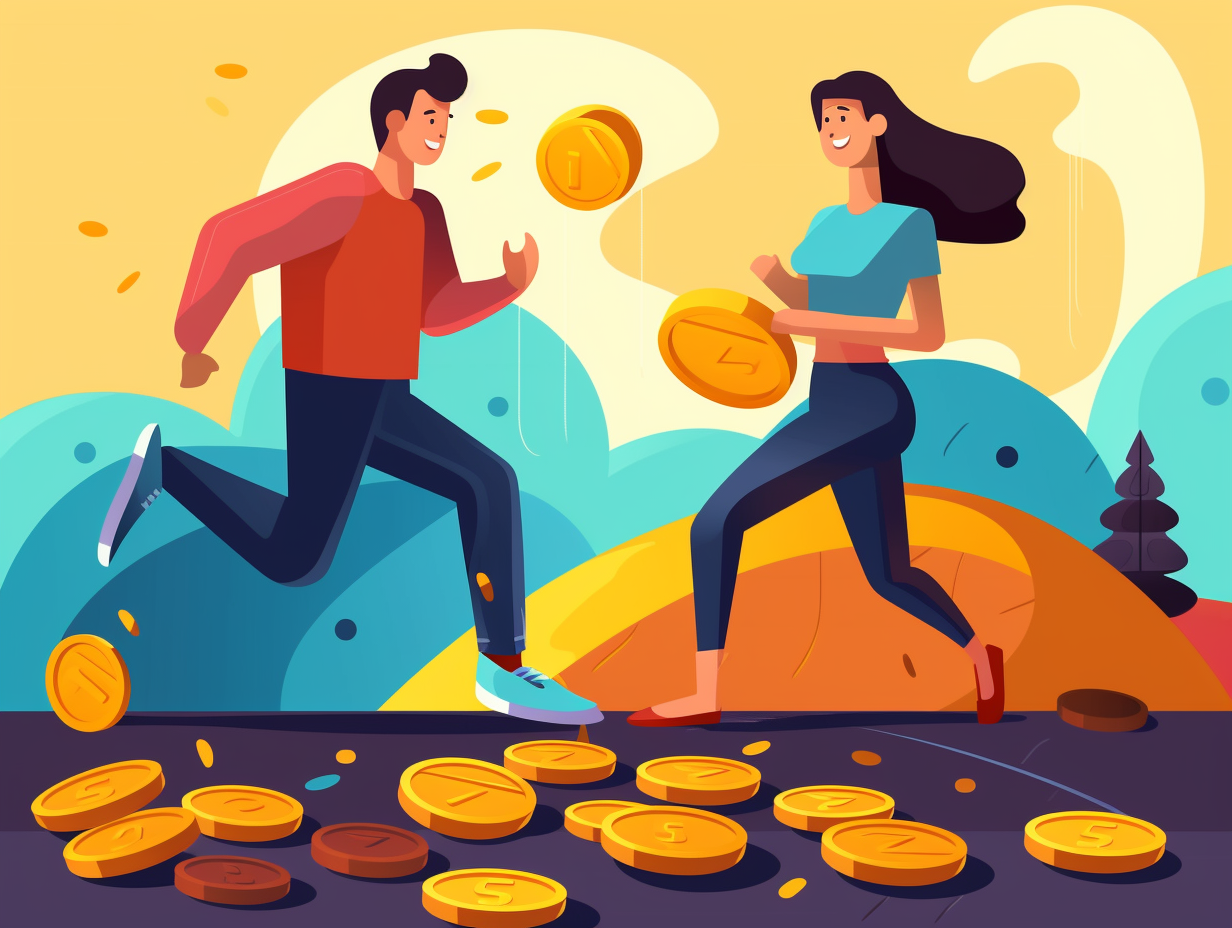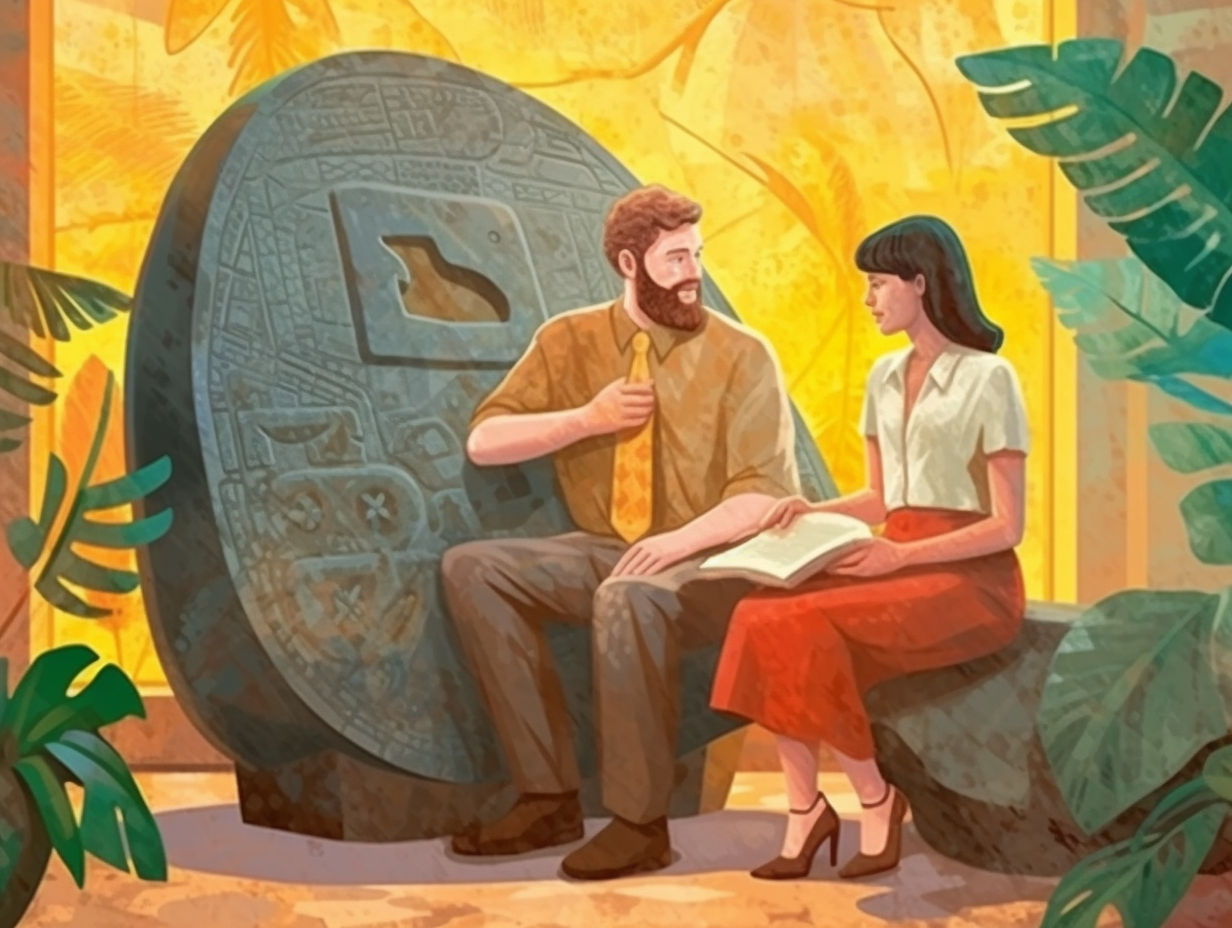Discover the Top 11 Fun Facts About Coins You Never Knew: History, Oddities, and More!

1. Electrum Coinage Origins
Once upon a time, in the ancient world of mix-and-match metals, the Greeks and Lydians tried their hand at a game of metallic alchemy: enter the world of electrum coinage! Contrary to popular belief, our forefathers were all about that natural metal blend life – not too flashy with the gold, but never one to skimp on that shiny silver: In fact, the first metal coins ever were made from electrum, a natural alloy of gold and silver, which they would stamp into standardized currency. But alas, nature's fiscal smoothie wasn't always consistent in its gold percentage, thus paving the way for the kroiseoi, minted from pure gold and silver, and earning its spot as the highly prized darling of the ancient economic scene until 515 BC when the Persian darics swooped in for the win.
Source => labrujulaverde.com
2. Cowrie Shell Currencies
When King Gezo wasn't shell-ing out for a big purchase, he reveled in the protection his cowrie amulets had to offer: These ancient currencies, composed of cowrie shells, were not only used for trading goods during the 14th century, but were also considered a symbol of luck, protecting its bearer from enslavement in America.
Source => nmaahc.si.edu

Did you know that during World War II, the U.S. penny was made of zinc-coated steel instead of copper? Find out more about this rare collectors' item!
=> Fun Facts about Pennies
3. Caesar's Coin Propaganda
Before Caesar put the bromance in bromanium by appearing on coins: Julius Caesar was the first Roman to have his image minted on currency during his lifetime, an ingenious political maneuver to display his complete dominance over Rome while sneakily creating a propaganda machine through money. After his death, Roman emperors continued this trend, adding their own faces to the coin line-up.
Source => citeco.fr
4. The Swashbuckling Spanish Dollar
Ahoy mateys, gather 'round to hear a tale of the Spanish doubloon that once rule-d the seven seas of trade, a piece of eight with the strength to bind continents and cultures: The Spanish dollar, the 16th-century financial swashbuckler, was the most widely used international currency in its heyday, going as far as Europe, America, and the Far East, eventually becoming the basis for the United States dollar, Japanese yen, and Chinese yuan. Yet, in this epic tale's twist, there's no trace of the Pillars of Hercules directing the course of the dollar sign's origin.
Source => en.wikipedia.org

5. 50p Coin's Heptagonal Heroism
Whoever said "square pegs don't fit in round holes" didn't meet the 50p coin, the heptagonal hero of vending machines: It was specifically designed as a seven-sided coin to be easily identifiable from other coins by touch and sight, while still being able to roll smoothly in vending machines without changing its height—a feat of engineering that has withstood the test of time for over five decades and inspired other countries to adopt similar coin designs.
Source => royalmint.com
6. The Artistry of Greek Coins
Before Zeus won the lottery and became the Sky-Daddy we know today, Greek coins had a roaring lion's head on the hemiobol and a wise ol' owl on the tetradrachm – giving a whole new meaning to the phrase "pretty penny": Despite their stunning artistry, most ancient Greek coins were lightweights, with the standard silver drachma a mere 4.3 grams and the tetradrachm at 17.2 grams – but the rare and illustrious dekadrachm could weigh even more, making these ancient coins truly worth their weight in …well, silver!
Source => oldetymecollectibles.com
7. Square Holes in Chinese Coins
Ever wondered why ancient Chinese coins look like quirky fashion accessories for stringing up a frugal charm bracelet? The hole truth revealed: Chinese cash coins had square holes purposely designed to string them together on a rope or rod for simple storage and counting, allowing larger denominations to be created, and even spreading their use into Japan, Korea, Vietnam, and Ryukyu Island as a widely accepted form of currency. Today, they still bring good fortune in the form of luck charms and traditional practices like Yijing divination and Feng shui.
Source => en.wikipedia.org
8. Micronesia's Giant Stone Currency
Imagine the Flintstones going on a shopping spree in Micronesia: Their currency of choice would be gargantuan stone disks instead of dinky little coins! The serious reveal: In the Yap islands, "Rai" stones, sometimes measuring up to four meters in diameter, were used as currency for trading, and are still considered valuable today - with ownership being passed down orally during transactions and still used for important matters like marriage and land purchases, despite the US dollar being the official currency.
Source => flockeo.com
9. Roman Soldiers Paid in Salt
Back when "seasoned" warriors were worth their salt: In ancient Rome, soldiers were literally paid in salt, giving rise to the word "salary". This precious commodity served as currency for trade and proved that being worth one's salt wasn't just a figure of speech!
Source => next.voxcreative.com

10. King Offa's Regal Coin Selfies
In the days when coins were regal selfies, and queens got in on the action too: King Offa and his wife, Cynethryth, made numismatic history with their stunning Anglo-Saxon coins, with Cynethryth being the only Anglo-Saxon queen depicted on a coin. Despite a scarce sum of just three surviving gold coins from Offa’s reign, they featured artistic talents so grand, even the king paid homage by tossing in a counterfeit Abbasid dinar bearing "Offa Rex" cheek by jowl with Arabic text – although any rumors of Offa moonlighting as a thief remain unconfirmed.
Source => en.wikipedia.org
11. Ancient Counterfeit Fourrees
In the days before piggy banks went "oink, oink," ancient scammers perfected the art of making fat stacks in the shadiest of ways: They produced fourrees, counterfeit coins with a cheap metal core, plated with precious metals like silver or gold. These faux coins were mostly created during the Roman and Greek eras, but their lightweight feeling gave them away to eagle-eyed Athenian testers in charge of plucking the fakes from circulation.
Source => forumancientcoins.com






